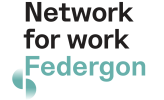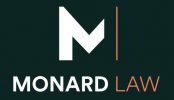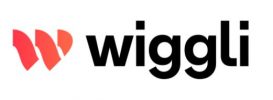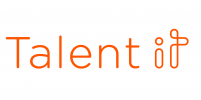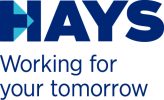Is Direct Sourcing een oplossing voor jouw instroomprobleem?
Direct sourcing is een talentwervingsstrategie waarbij een bedrijf zijn eigen merk gebruikt om kandidaten te vinden voor tijdelijke functies. Overweeg je als hr zelf ook direct sourcing toe te passen? Met deze vijf algemene indicatoren weet je of het de juiste oplossing is om aan de personeelsbehoeften van je organisatie te voldoen.
Dit is een Engelstalige bijdrage van NextConomy partner CXC.
Flexibility as a key advantage
Adopting non-traditional employment solutions allows businesses to scale their workforce up and down as the market demands. In times of widespread economic uncertainty, this flexibility can be a key competitive advantage.
But sourcing, engaging, retaining and redeploying the contingent workforce you need to keep things running smoothly is no mean feat — especially when lean budgets mean expensive staffing agencies might not be an option.
One innovative solution that more and more companies are turning to is direct sourcing: using the power of your own brand to attract talent.
Not sure if this solution is the right choice for your organisation? We’ve got you. In this article, we’ll share five sure-fire signs that direct sourcing could be the solution to your contingent workforce needs.
Let’s kick things off with a quick definition.
Direct sourcing: a definition
Direct sourcing is a talent acquisition strategy where a company leverages its own brand to find candidates for contingent roles. It usually involves building pools of known and trusted talent that you can tap into whenever you have a position to fill.
Direct sourcing is an alternative to going through third-party recruitment or staffing agencies — but that doesn’t mean you have to do it on your own. A skilled partner like CXC can help you to develop a direct sourcing solution that harnesses the power of your brand to find the contingent talent you need.
5 signs direct sourcing might be the right solution for you
Direct sourcing is just one of many workforce solutions — and it may well be the wrong one for your organisation. Before diving in with a direct sourcing provider, you should take the time to consider whether it’s the solution that best fits your needs.
To help you figure it out, here are five signs that direct sourcing could be the right solution for you and your business.
- You need to hire a high volume of workers, fast
If you often find yourself needing to hire a high volume of workers yesterday, direct sourcing could be a good solution for your organisation.
That’s because direct sourcing involves building a ready supply chain of contingent talent that you can tap into as and when you need it. It can significantly shorten your time-to-hire (T2H) compared to traditional recruitment methods.
Plus, workers you engage through your direct sourcing solution are already engaged and familiar with your brand. In some cases, they might even have worked for you before. That means you’ll be able to onboard them and get them up to full productivity much more quickly than you could with a traditional hire.
- You’re looking for more cost-effective recruitment solutions
If you’ve been using recruitment or staffing agencies to source your contingent workforce, you’ll know that agency costs can easily balloon over time. Direct sourcing can offer a more cost-effective solution — even if you work with a specialist provider.
For one thing, when you implement a direct sourcing strategy, you can focus your efforts (and advertising costs) for each role on people who you already know are interested — which can significantly reduce your cost-per-hire (CPH).
And direct sourcing can reduce your costs in less direct ways too. For example, it gives you access to talent that you might otherwise have lost, like past candidates or previous contractors. Since these people are already familiar with your brand and won’t need to go through a lengthy onboarding process, this can save you money over time.
Lastly, working with a direct sourcing provider streamlines and simplifies the whole process of sourcing contingent workers. Instead of managers trying to figure it out on their own (which often results in rogue spending and inflated costs), you’ll be able to manage all of your contingent worker engagements through one consistent and cost-effective process.
- You need flexibility and the ability to quickly deploy new hires
If your workforce needs change quickly from one month (or week) to another, that could be another sign that direct sourcing is the solution for you.
Here’s why: direct sourcing involves building pools of known contractors who are ready and willing to be deployed at any moment. That makes it much easier to quickly scale up your workforce in line with increased demands.
And of course, the opposite is true too: you can quickly scale back your workforce whenever you need to. That means you’ll always have the workers you need when things are busy, but won’t have to waste money on resources you’re not using during quieter times.
This can be a key competitive advantage, especially if you’re operating in a fast-moving market.
Direct sourcing involves building pools of known contractors who are ready and willing to be deployed at any moment.
- You want to maintain control over your employer brand
In a recent survey, more than half of the respondents said that they wouldn’t buy from a brand after a bad hiring experience. And another survey found that candidates who had been through a negative hiring experience were 185% less likely to refer other jobseekers to the company in question.
Put simply, the way your brand is perceived during the recruitment process can have a big impact on your business. But if you’re relying on third-party recruitment agencies, this is often out of your control. A bad experience with them could easily reflect back on your organisation, even if it’s not your fault.
Direct sourcing, on the other hand, uses your brand to source and attract candidates — giving you much more control over how it’s presented to candidates. Even if you work with a partner (like CXC) to do this, they’ll be experienced in representing their clients’ brands positively and authentically — that’s the whole point, after all.
Direct sourcing uses your brand to source and attract candidates — giving you much more control over how it’s presented to candidates.
- You want to enhance the contractor experience and build loyalty
We get it: ensuring that every contractor has a positive experience working with your organisation isn’t easy. Even if your intentions are good, inconsistent engagement practices, problems with payments and all sorts of other issues can cause problems for your workers.
And, as well as damaging their loyalty to you as an employer, this is likely to impact your employer brand over time.
If you’re struggling with this, there’s no need to panic — but it could be another sign that you should start looking into a direct sourcing solution.
Why? Simple: when you work with an experienced direct sourcing provider, your contractors will get a smooth, consistent and pleasant HR experience from recruitment through to the eventual end of their contracts.
Plus, a key part of direct sourcing is keeping workers engaged with your brand, even when they’re not currently working for you. By providing them with resources and information, you (or your direct sourcing partner) can make sure you’re always top-of-mind, even while they’re working for other organisations.
All of this means that direct sourcing can help you build solid relationships with your preferred contractors over time. If you do it right, you’ll be able to deploy the same workers again and again as their loyalty to your brand grows.
Direct sourcing doesn’t have to be all or nothing
If some of the points above resonated with you more than others, you may still be wondering if direct sourcing is the solution you need. But keep in mind that it doesn’t have to be all or nothing. Many organisations use direct sourcing to meet some of their staffing needs, and other solutions for different parts of their workforce.
If this is your situation, your best bet is to work with a partner who can offer various workforce solutions to meet the needs of different parts of your business — a partner like CXC, for example.
Bron: CXC
Lees ook :












